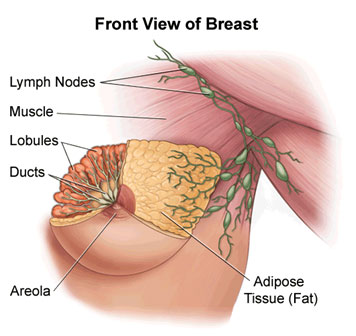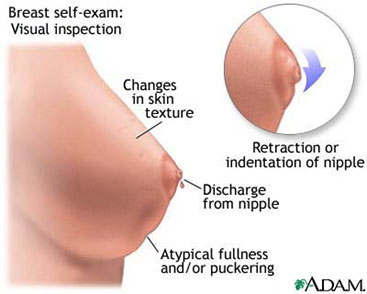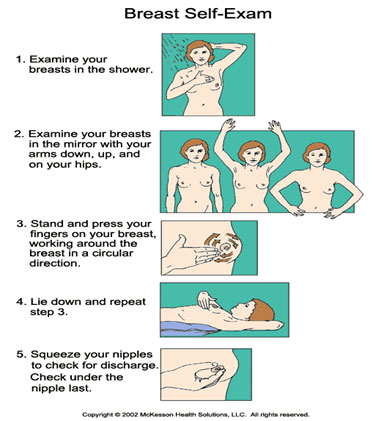hemalbhagat@hotmail.com
Get a Consultation
Breast changes are common. From the time a girl begins to develop breasts and begins menstruating and throughout life, women may experience various kinds of breast pain and other breast changes. Some of these changes normally occur during the menstrual cycle, during pregnancy, and with aging. Breast lumps, tenderness, and other changes may occur. Most breast lumps and other changes are not cancer.

Lumps within breast tissue are usually found unexpectedly or during a routine monthly breast self-exam. Most lumps are not cancer but represent changes within the breast tissue. As your breasts develop, changes occur. These changes are influenced by normal hormonal variations.
Breast pain is a common breast problem mostly in younger women who are still having their periods, and happens less often in older women. Although pain is a concern, breast pain is rarely the only symptom of breast cancer. Most breast cancers involve a mass or lump.
Some causes of breast pain are:
Some lumps may be cancer. Breast cancer is usually associated with the risk factors of age, genetics, or hormones. About 75% of breast cancers occur in women older than 50 years, 23% occur in women ages 30-50 years, and 2% occur in women under 30 years.
Breast pain: Most commonly associated with fibrocystic changes. With fibrocystic changes, the pain occurs about a week before your menstrual period. The pain usually goes away gradually with the onset of your period.
Cyclic breast pain is typically most severe before your period and gets better during your period.
It is usually described as bilateral (in both breasts),and is often associated with lumpiness.
Women tend to describe this pain as dull, aching, heavy, or sore, and it can radiate to your armpit or even down your arm.
Noncyclic breast pain is typically unilateral (only on 1 side) with no relationship to your menstrual cycle.
If it is localized and persistent, it may be due to the presence of a fibroadenoma or cyst. But other more serious causes must be ruled out.
Nipple discharge: May occur from an infection, or from cancer, or from very small tumors within a part of the brain called the pituitary gland, which influences secretions from the breast. In cases of infection, the discharge is usually brown or greenish.
Skin changes: In cancer there is fibrosis (scarring) of underlying breast structures (small ligaments) causing retraction (pulling) of the breast that can lead to dimpling of the skin or flattened or deviated nipples. Cancer may block up the drainage (lymphatics) of the breast, and your skin may take on the appearance of the peel of an orange. Take these symptoms very seriously and see your health care provider If they occur.
Mastitis: Such breast infections may cause pain, redness, and warmth of the breast along with these symptoms:
Abscess: Sometimes a breast abscess can complicate mastitis


When your breast pain is severe enough to interfere with your lifestyle and when it occurs for more than a few days each month, you may be treated with medications
When nonmedical treatment fails to control cyclic breast pain, doctor may prescribe birth control pills or danazol (Danocrine).
Noncyclic breast pain is managed by treating the underlying cause. If a mass or lump is found, it is checked and treated. When your breast pain is caused by chest wall tenderness, it is treated with anti-inflammatory medication or rarely by steroid injections.
For simple mastitis without an abscess, oral antibiotics are prescribed.
In general, surgery is not necessary to treat breast pain unless a mass is found. Surgery is performed to remove a lump.
If an abscess is present, it must be drained. After injection of local anesthetic, the doctor may drain an abscess near the surface of the skin either by aspiration with a needle and syringe or by using a small incision. This can be done as an OPD procedure.
If the abscess is deep in the breast, however, it may require surgical drainage in the operating room. This is usually done under general anesthesia in order to minimize pain and completely drain the abscess. If your infection worsens in spite of oral antibiotics or if you have a deep abscess requiring surgical treatment, you may be admitted to the hospital for IV antibiotics.
Recommended mammograms should be part of your routine health maintenance screening. Keep track of when your last mammogram was done and inform your doctor when you are due for another, based on your doctor's recommendations.
Follow-up care will vary depending on the cause of your breast pain, severity of symptoms, and treatment strategy.
Close follow-up of any breast lump or infection is also important to rule out breast cancer. Mastitis does not cause cancer, but cancer can mimic mastitis in appearance
The American Cancer Society Guidelines for the Early Detection of Cancer recommend yearly mammograms starting at age 40. Also, Women in their 20s and 30s should have a clinical breast exam (CBE) as part of a periodic health exam by a health professional, preferably every three years. After age 40, women should have a breast exam by a health professional every year.